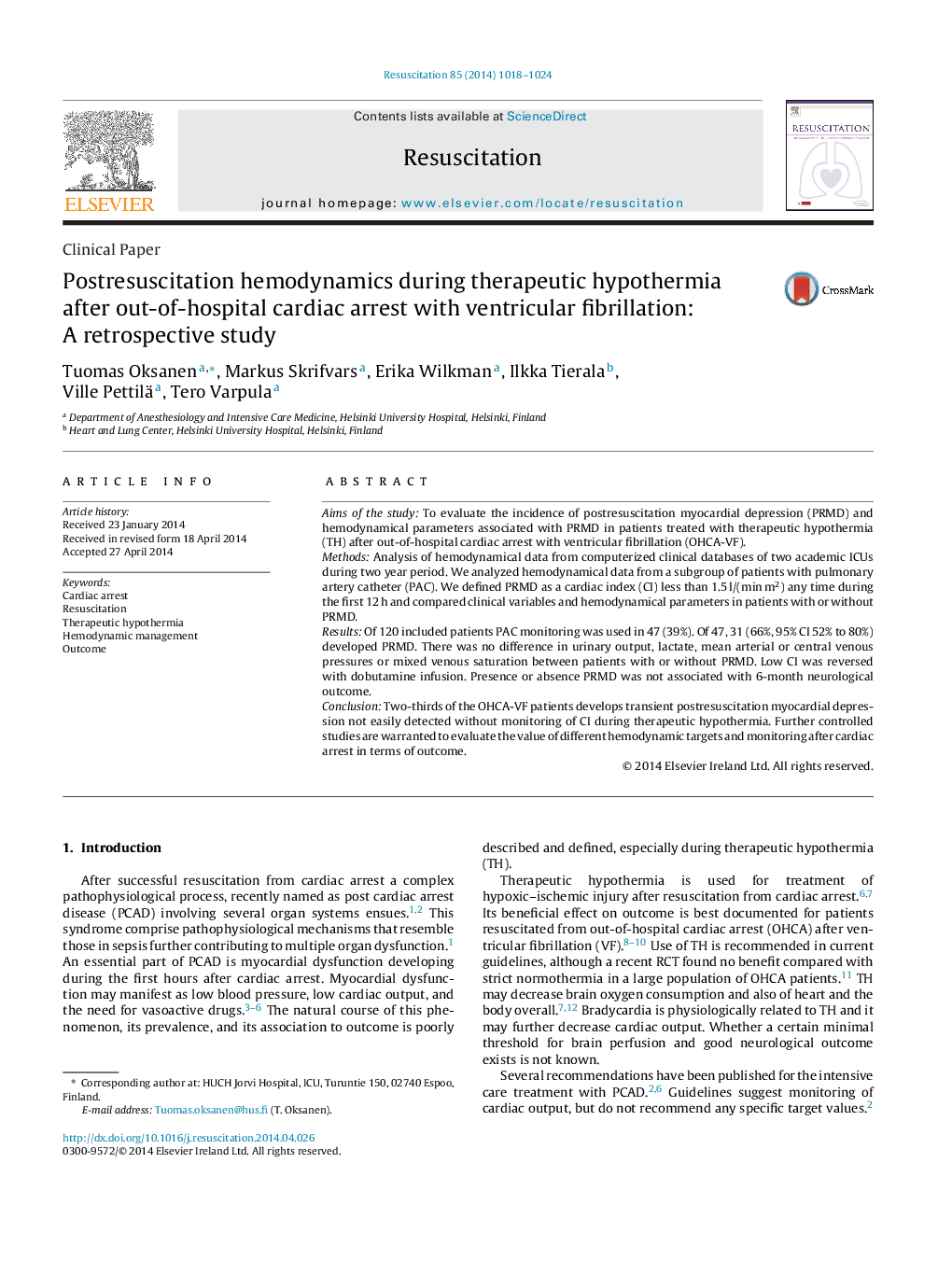| Article ID | Journal | Published Year | Pages | File Type |
|---|---|---|---|---|
| 5998097 | Resuscitation | 2014 | 7 Pages |
Aims of the studyTo evaluate the incidence of postresuscitation myocardial depression (PRMD) and hemodynamical parameters associated with PRMD in patients treated with therapeutic hypothermia (TH) after out-of-hospital cardiac arrest with ventricular fibrillation (OHCA-VF).MethodsAnalysis of hemodynamical data from computerized clinical databases of two academic ICUs during two year period. We analyzed hemodynamical data from a subgroup of patients with pulmonary artery catheter (PAC). We defined PRMD as a cardiac index (CI) less than 1.5 l/(min m2) any time during the first 12 h and compared clinical variables and hemodynamical parameters in patients with or without PRMD.ResultsOf 120 included patients PAC monitoring was used in 47 (39%). Of 47, 31 (66%, 95% CI 52% to 80%) developed PRMD. There was no difference in urinary output, lactate, mean arterial or central venous pressures or mixed venous saturation between patients with or without PRMD. Low CI was reversed with dobutamine infusion. Presence or absence PRMD was not associated with 6-month neurological outcome.ConclusionTwo-thirds of the OHCA-VF patients develops transient postresuscitation myocardial depression not easily detected without monitoring of CI during therapeutic hypothermia. Further controlled studies are warranted to evaluate the value of different hemodynamic targets and monitoring after cardiac arrest in terms of outcome.
